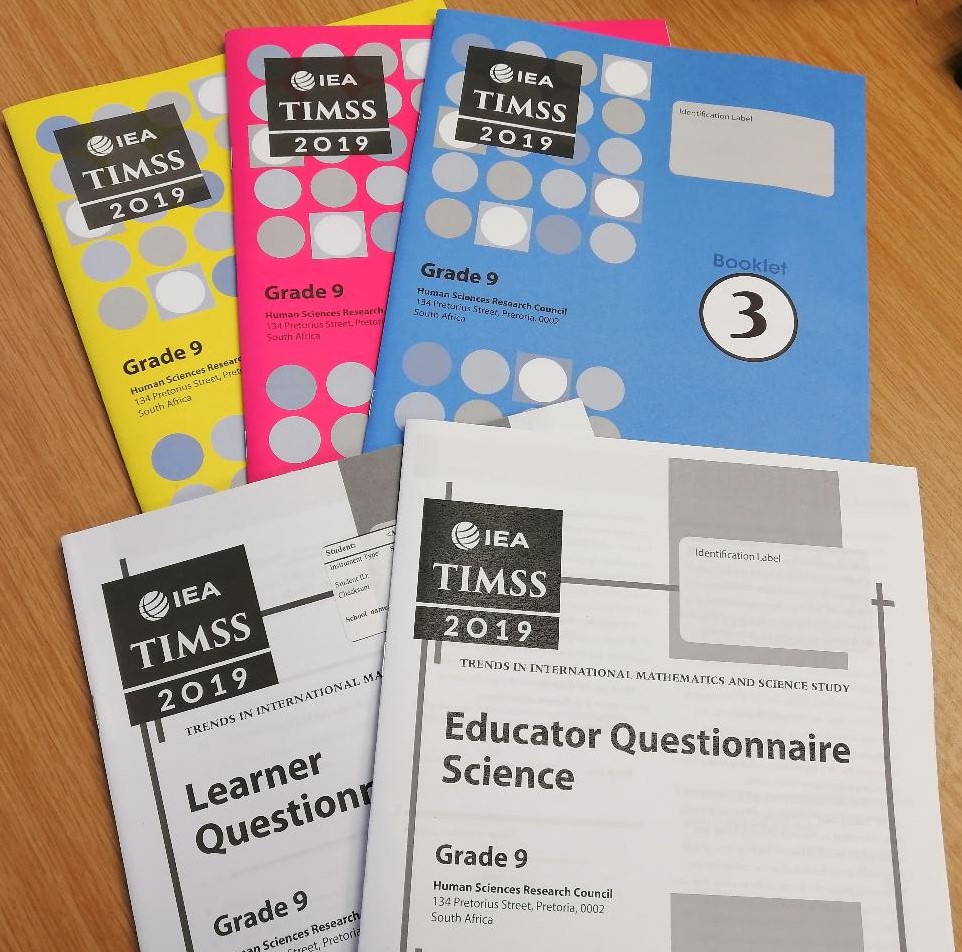The Trends in International Mathematics and Science Study (TIMSS) is an assessment of the mathematics and science knowledge of fourth (or fifth) and eighth (or ninth) grade learners in various countries around the world. TIMSS was designed by the International Association for the Evaluation of Educational Achievement (IEA) to allow participating nations to monitor their educational achievements and how their achievement changes over time, as well as to compare educational achievement across borders in the key subjects of mathematics and science. In addition to achievement data, TIMSS collects contextual information about the home, school and classroom to explain learner achievement.
TIMSS 2019 was the seventh assessment cycle of TIMSS. It was conducted in 64 countries and 8 benchmarking systems.
TIMSS instruments
Achievement booklets
Learners’ knowledge is assessed using a set of achievement booklets. Each learner is allocated a booklet, which contains two sections: one on science and one on mathematics. Throughout the TIMSS cycles, vast numbers of items have accumulated, and with each cycle certain items are released into the public domain. The remainder are used as trend items in further TIMSS cycles. By releasing items into the public domain; countries are able to use these items as exemplars for preparation for the next TIMSS cycle.
Due to the large number of items that have been developed, and the fact that the length of the average TIMSS test is 90 minutes, it is not possible for learners to be tested on all items in the TIMSS repository. For this reason, TIMSS uses a matrix sampling approach, meaning that all the TIMSS items are spread across 14 booklets, and a single booklet is administered to each learner.
Contextual questionnaires
During TIMSS administration a total of four background questionnaires are administered in addition to the achievement assessment instruments:
- The Learner Background Questionnaire is completed by the learner who completed the assessment, and asks about aspects of the learners’ home and school lives: their home environment, school climate for learning, and their perceptions and attitudes towards mathematics and science.
- The Teacher Questionnaire is administered to the mathematics and science teachers of the learners who write the assessment tests. The questionnaire was designed to gather information on teacher characteristics, as well as classroom contexts for teaching and learning mathematics and science.
- The School Questionnaire is administered to the principal in all sampled schools. It asks about school characteristics like instructional time, resources and technology, as well as parental involvement.
- The Curriculum Questionnaire is completed by the National Research Coordinator who is required to complete information pertaining to the curriculum which is followed by South African public schools.
At the Grade 5 level, a further questionnaire is also administered:
- The Home Questionnaire (Early Learning Survey) is completed by the parents or guardians of participating Grade 5 learners. The questionnaire asks about learners’ preparations for primary schooling, including preschool attendance and literacy- and numeracy-centered activities in the home; and includes questions about home resources, level of education and employment.

